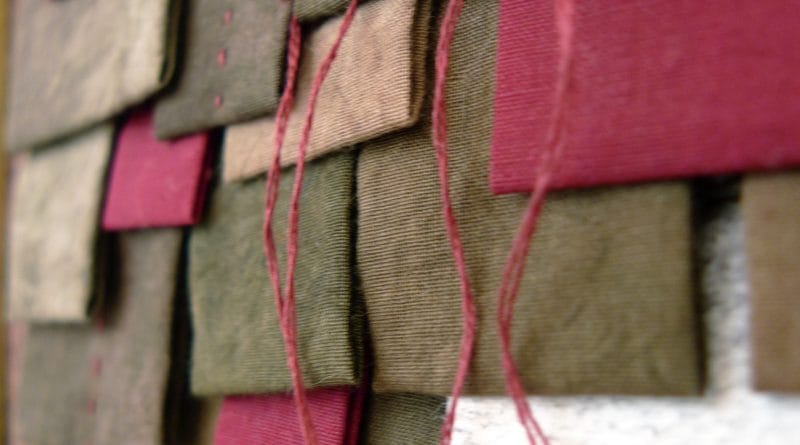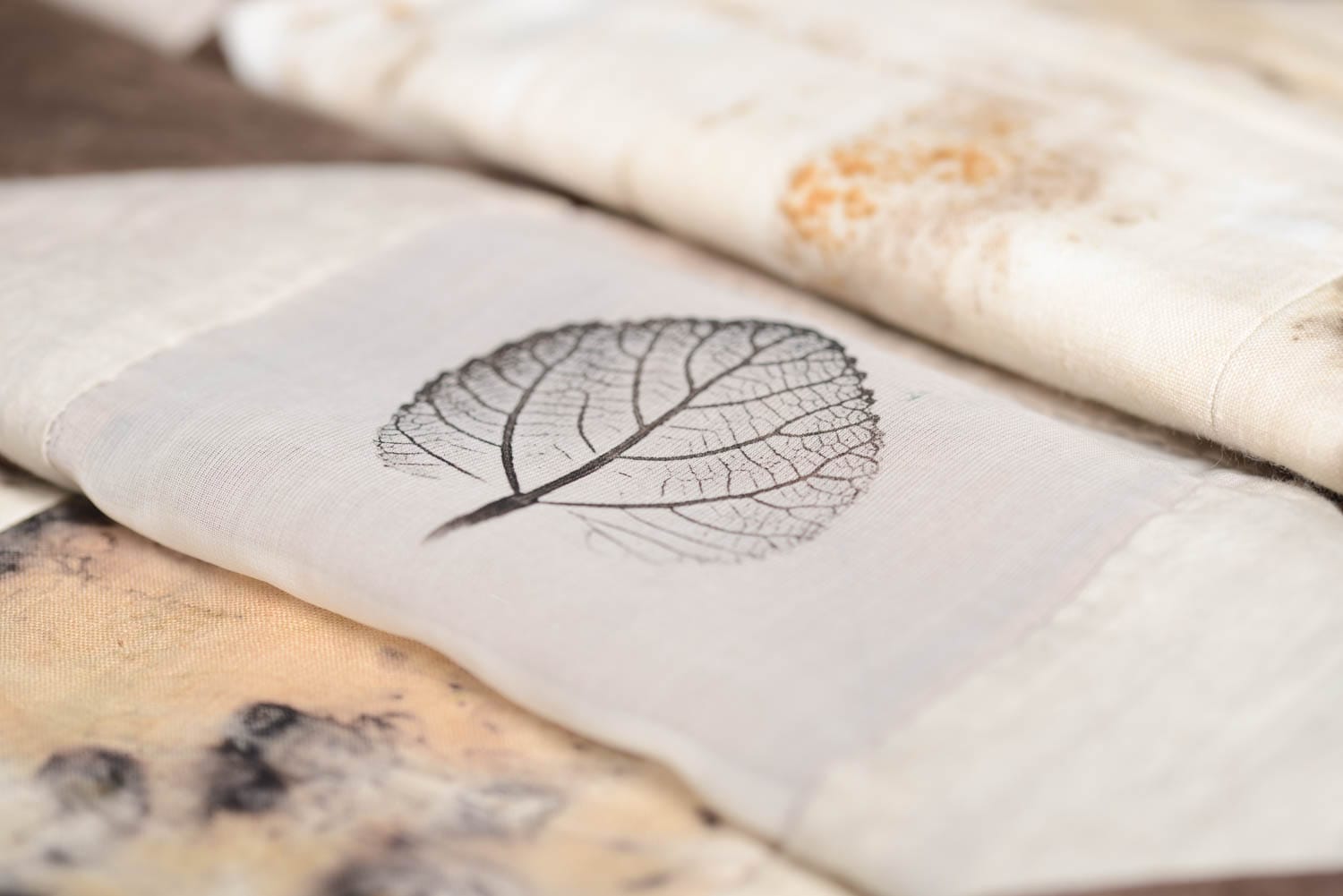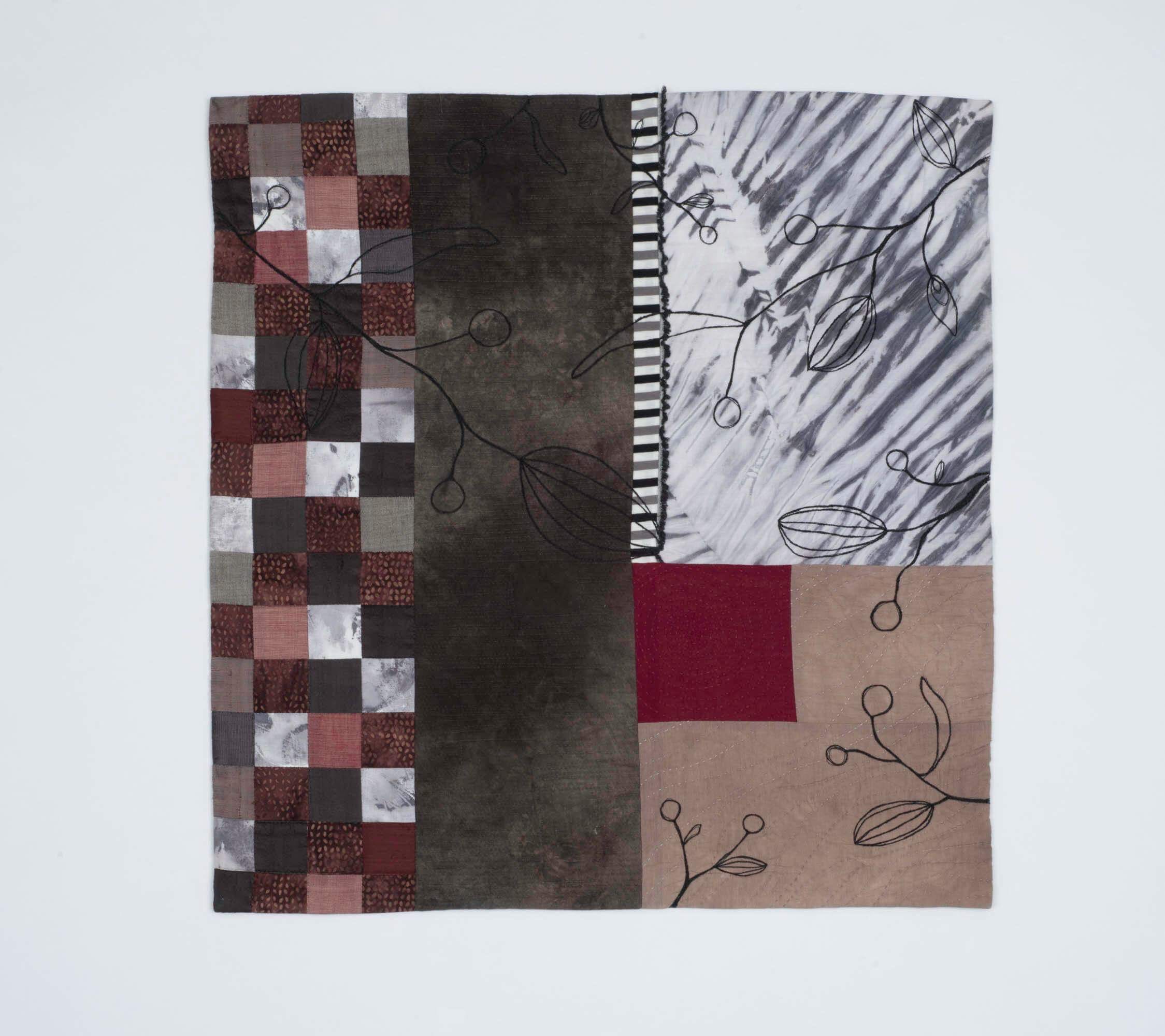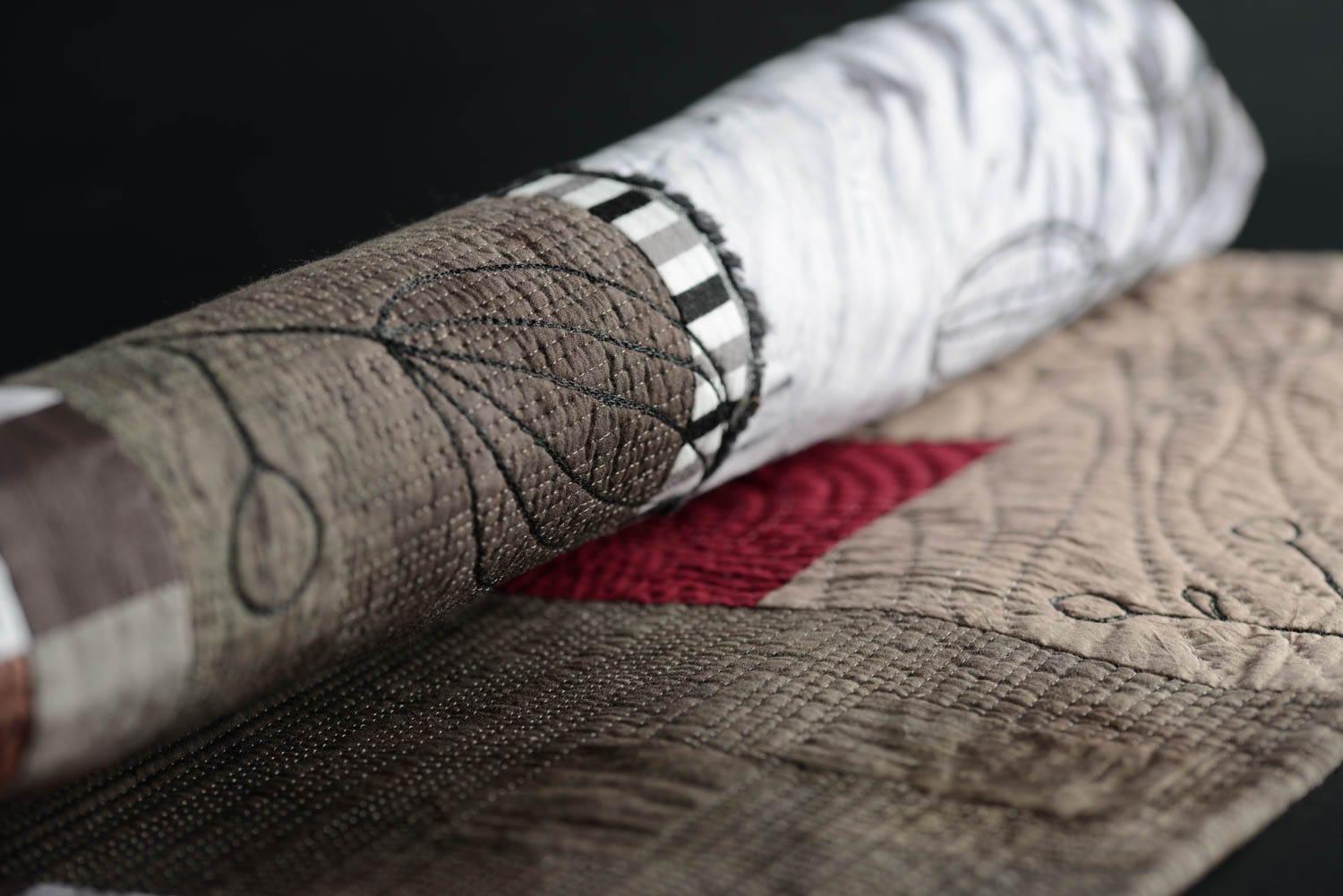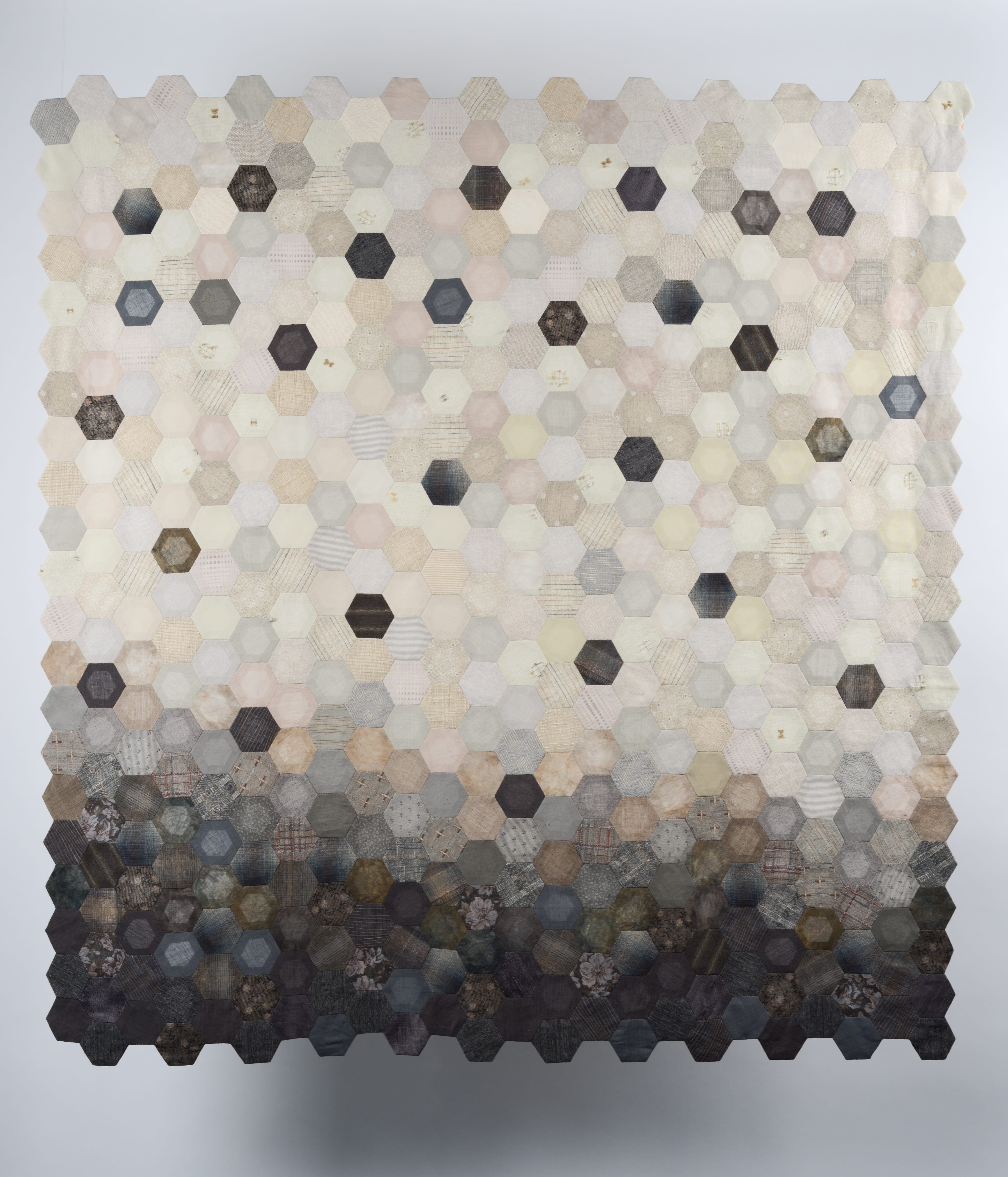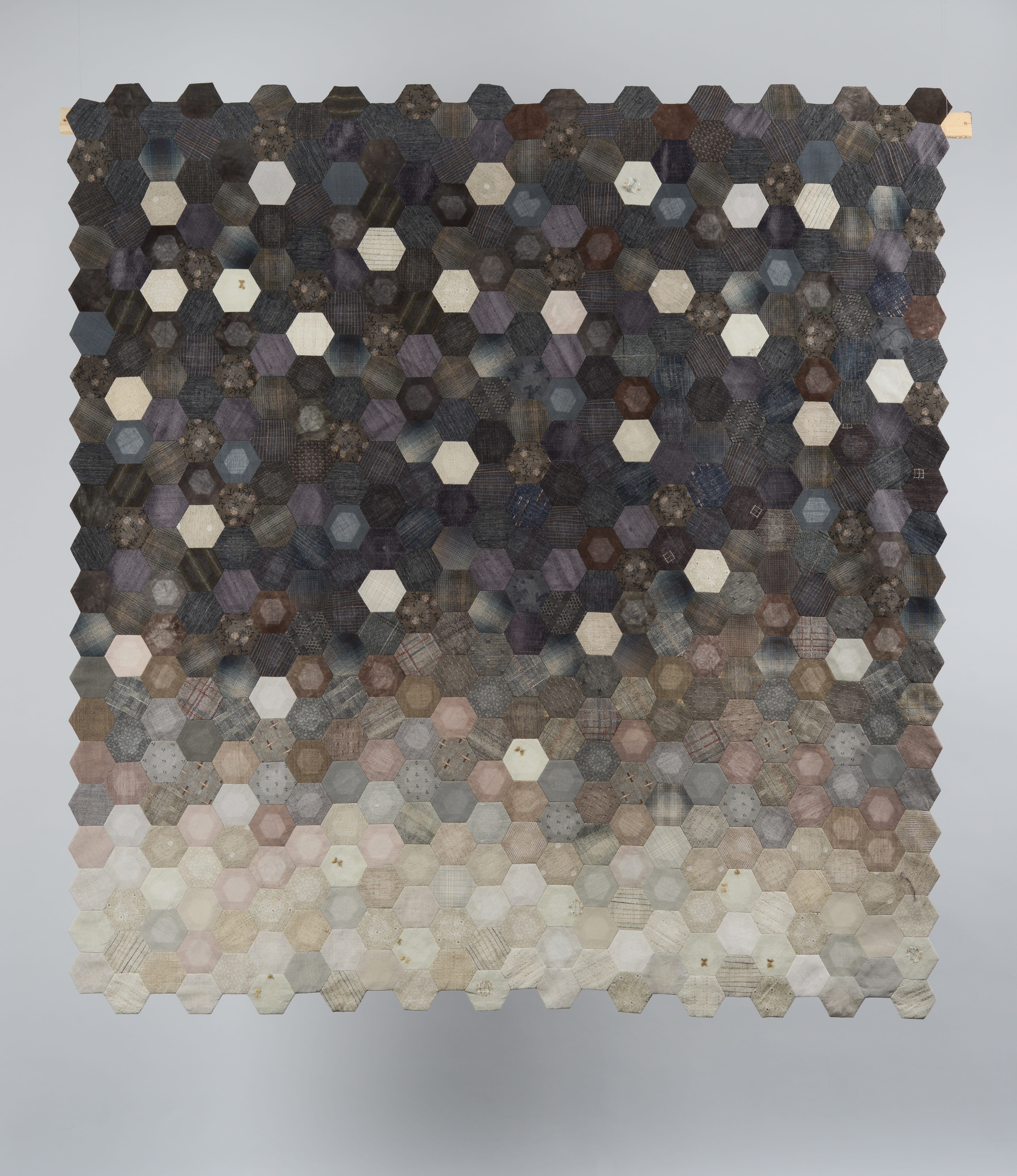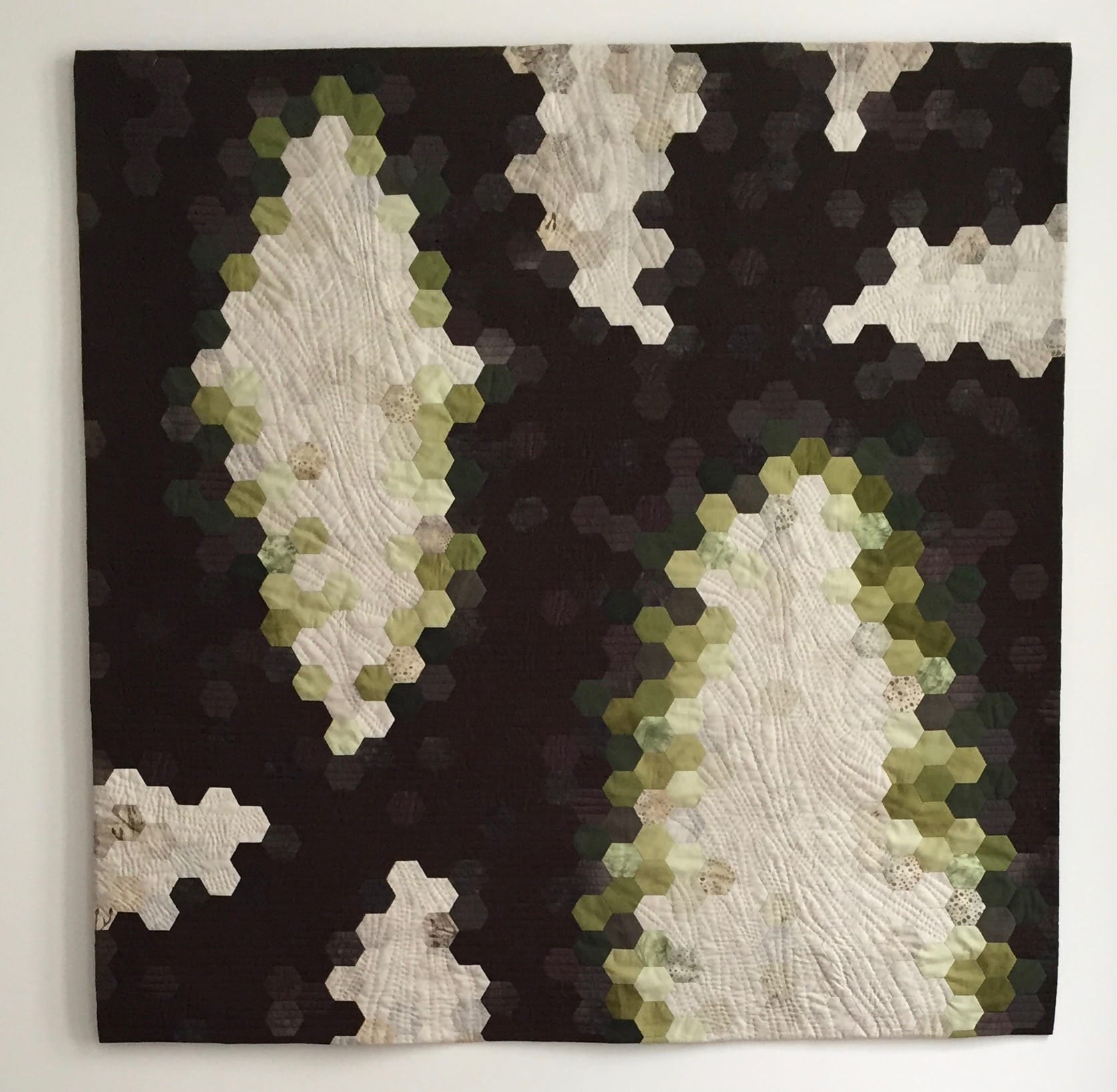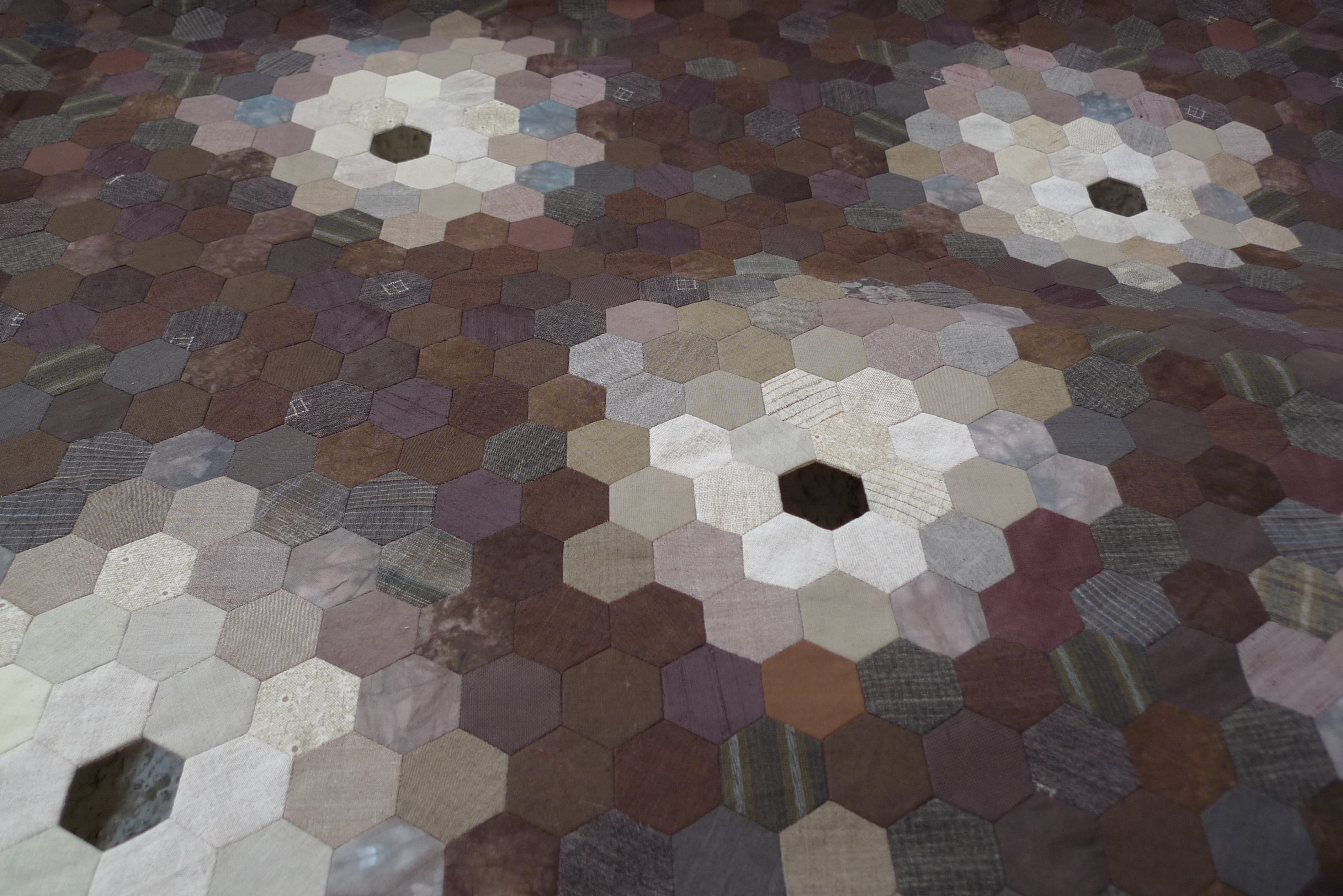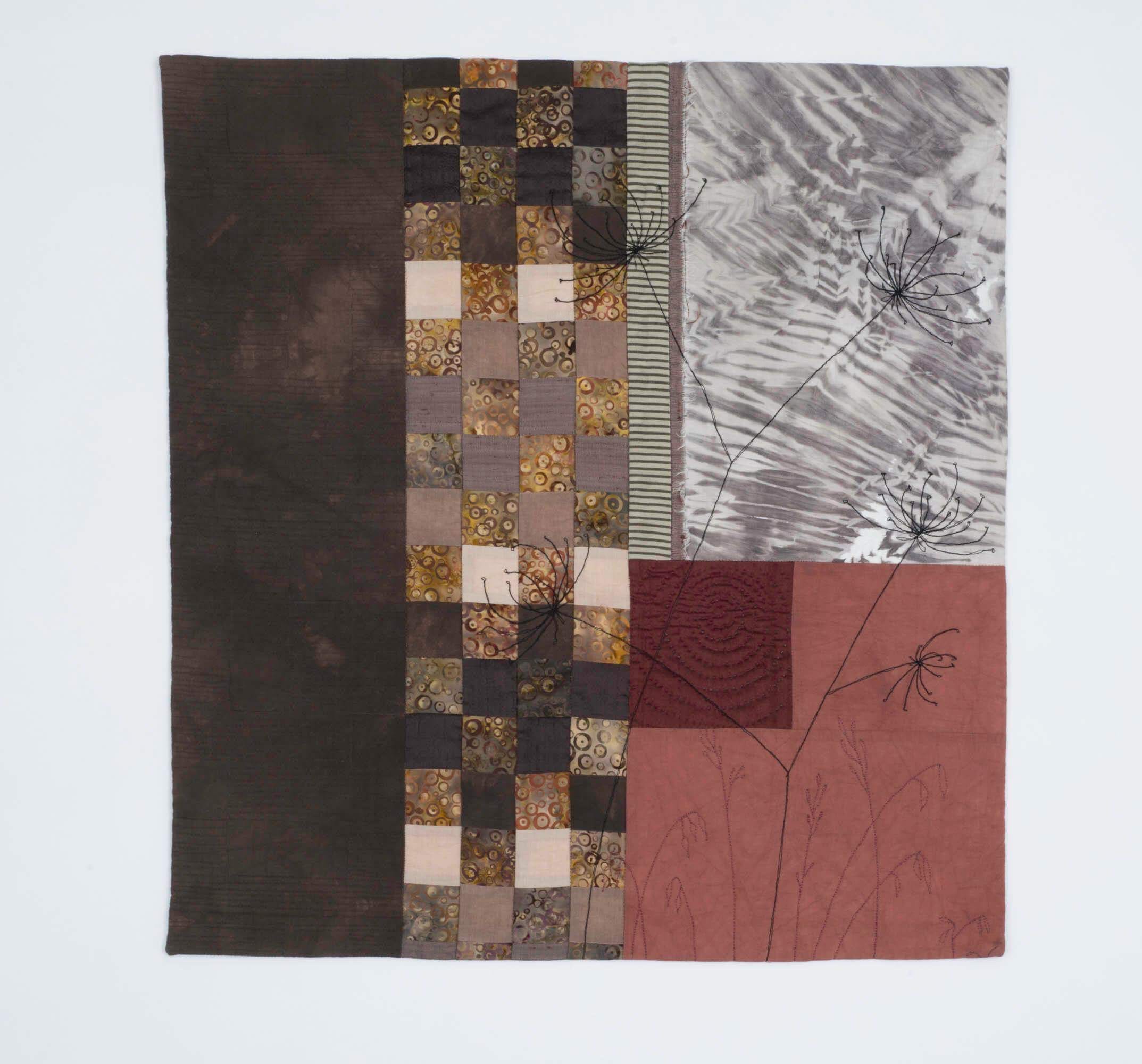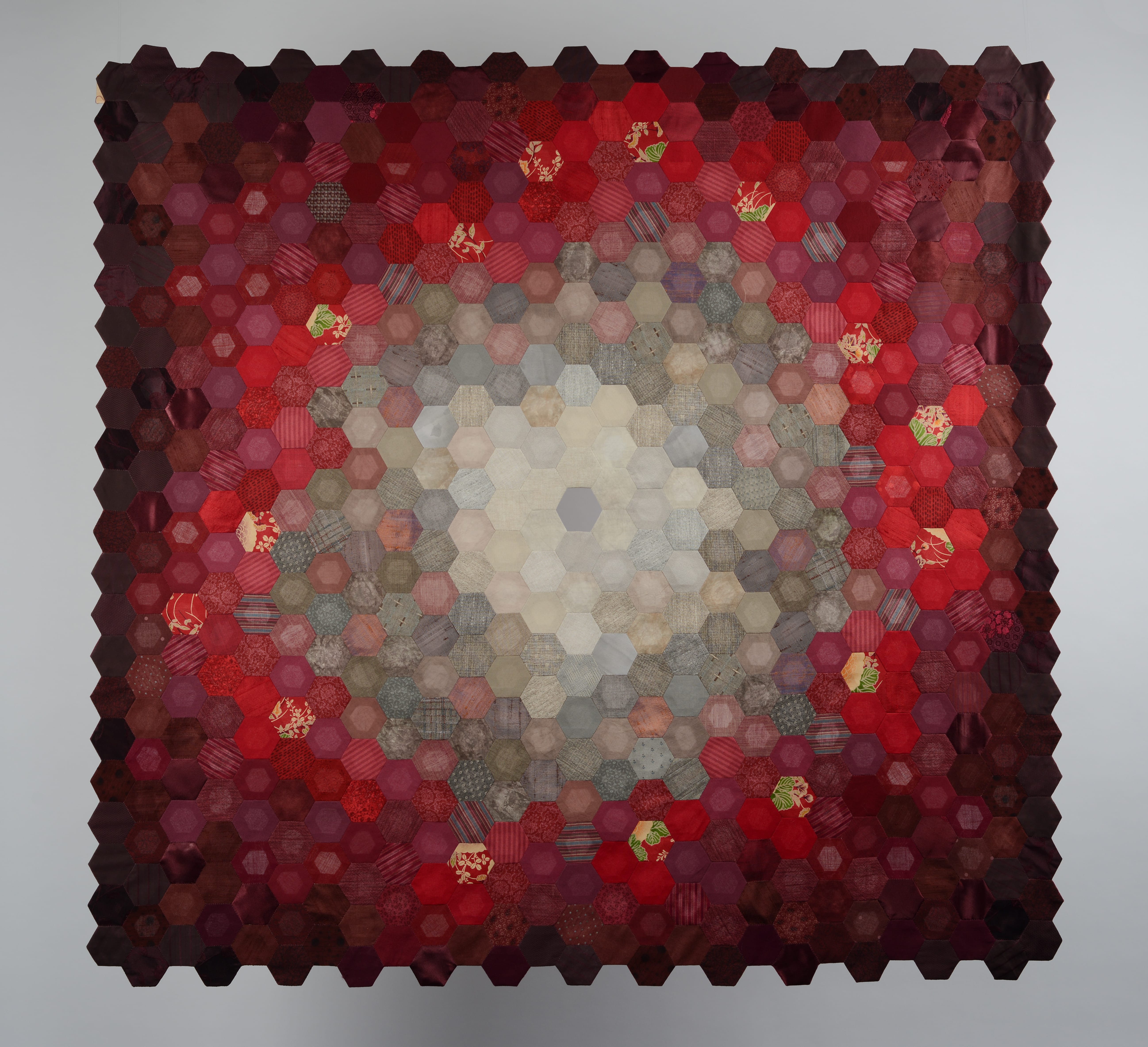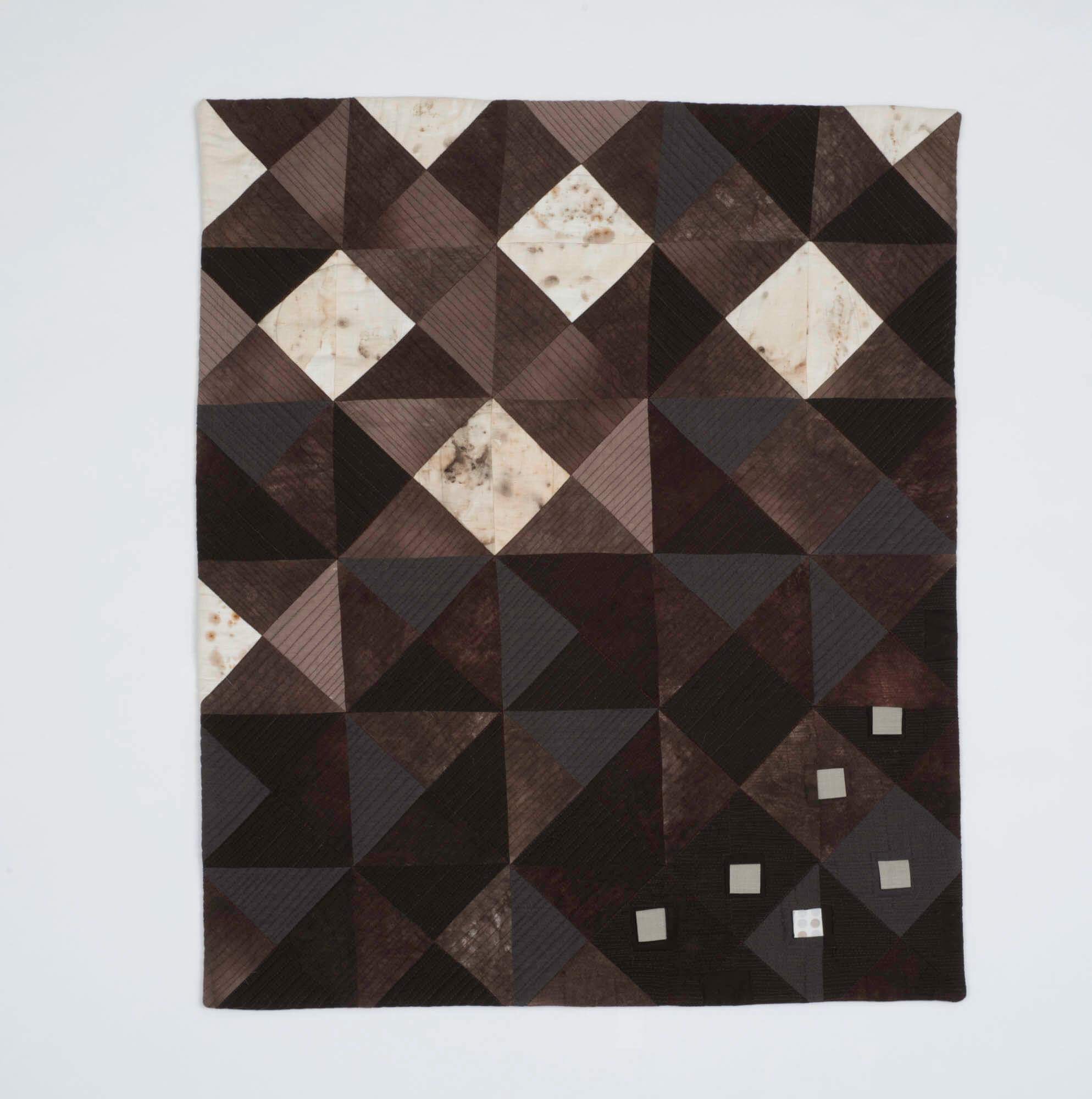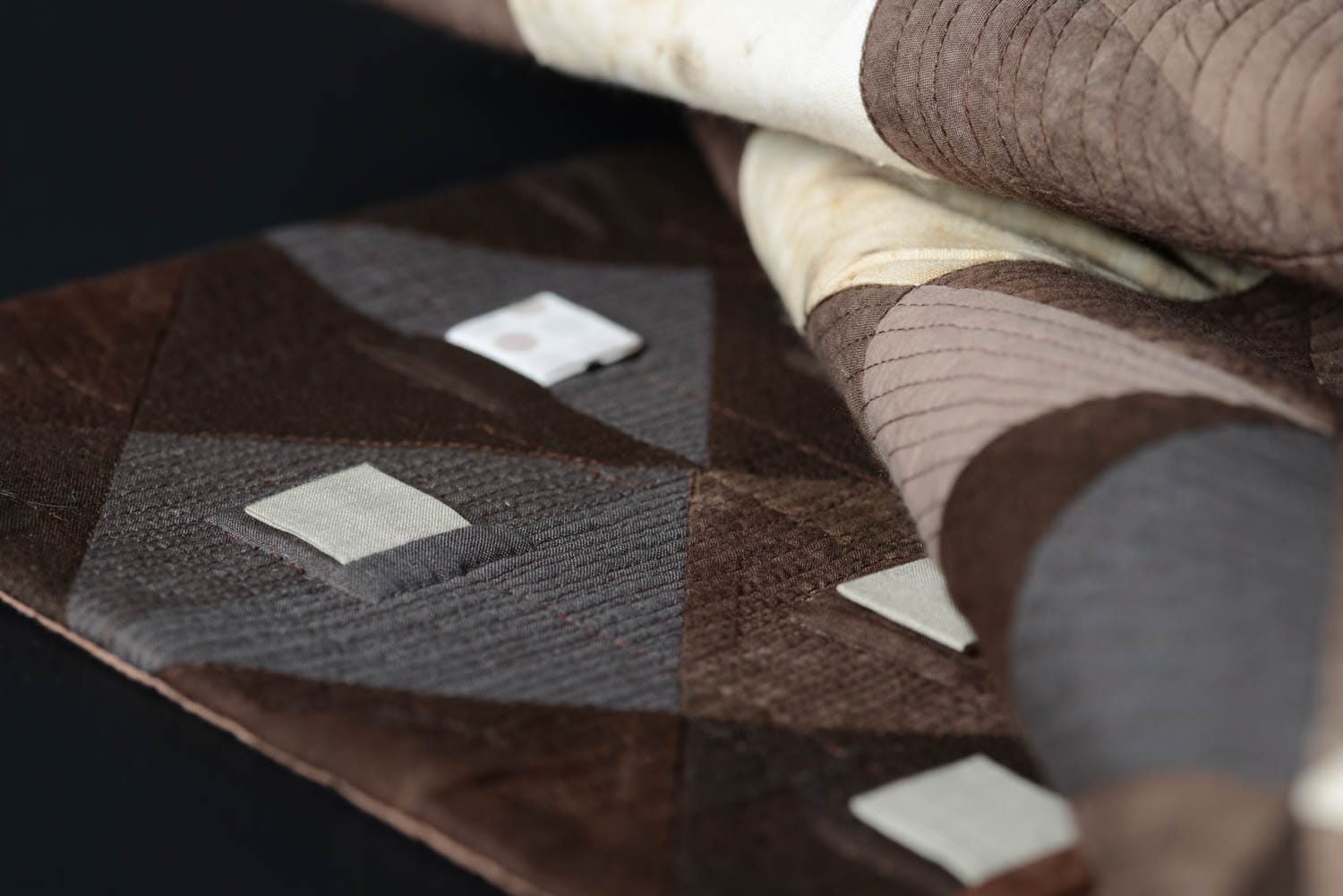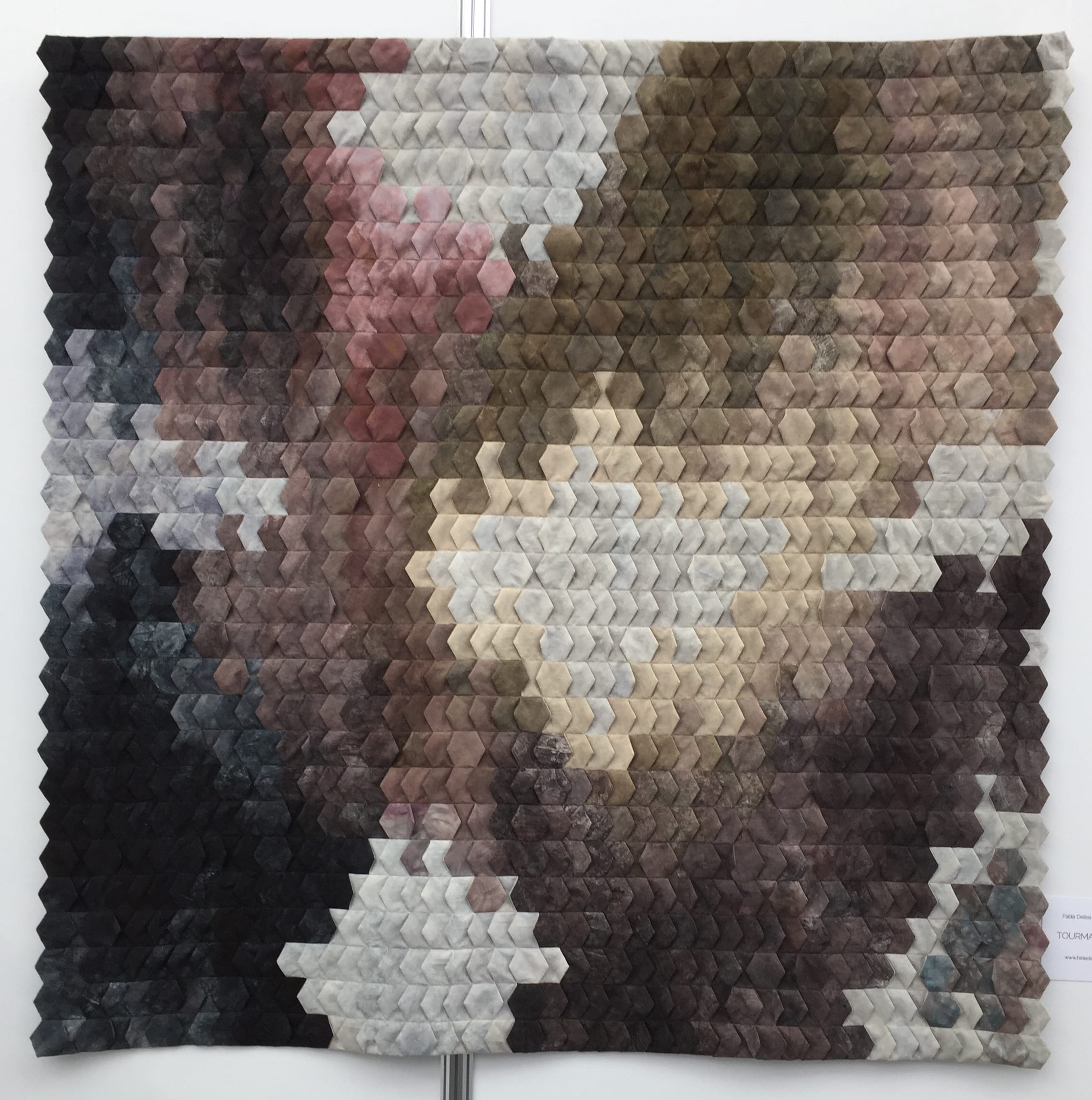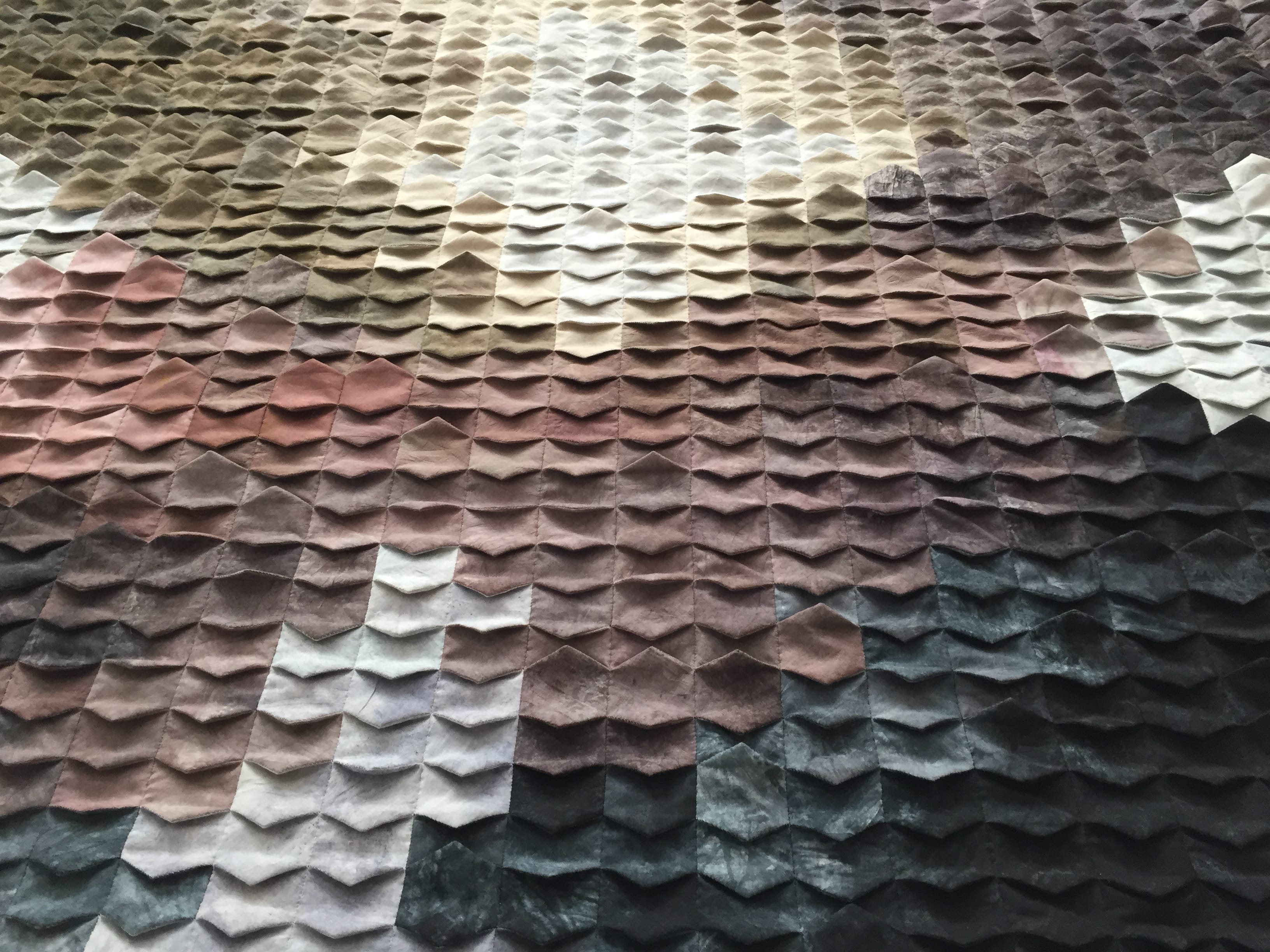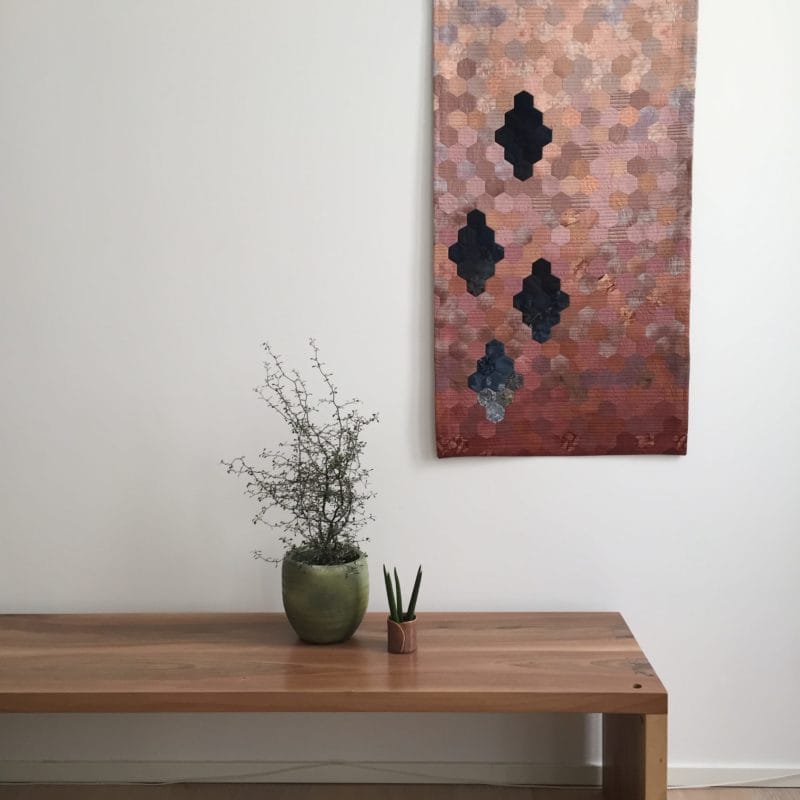Interview with Fabia Delise
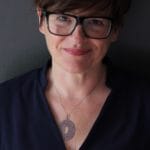 Fabia Delise is a textile artist from Trieste who moved to Genoa in 2001, since she was very young she became infatuated with textile fibers and became passionate about embroidery, experimenting with different “manual” techniques in the field of traditional embroidery. Thanks to the meeting with French artist Fanny Viollet, she approaches free-motion machine embroidery (piqué libre), increasingly appreciating its versatility and possibilities in artistic expression.
Fabia Delise is a textile artist from Trieste who moved to Genoa in 2001, since she was very young she became infatuated with textile fibers and became passionate about embroidery, experimenting with different “manual” techniques in the field of traditional embroidery. Thanks to the meeting with French artist Fanny Viollet, she approaches free-motion machine embroidery (piqué libre), increasingly appreciating its versatility and possibilities in artistic expression.
In 2006 she came into contact with the variegated world of Patchwork, preferring the new currents of contemporary Patchwork.
Hes first work “Controcorrente” was awarded at the “Mediterranean sea of colors and emotions” competition held on the island of Elba during the second International Patchwork Fair.
It is the beginning of her personal and artistic growth.
Self-taught in the field of Textile Art, she deepens her passion by participating in various courses in Italy and abroad held by internationally renowned artists (Yoko Saito, Cas Holmes, Linda Colsh, Melanie Testa, Dorothy Caldwell, Pauline Burbridge, Alice Fox).
Fabia, how did you approach textiles and why?
I don’t think there was a precise moment, a “love at first sight”, rather a deep bond that starts in my childhood and always accompanies me. As a child I lost myself watching an old aunt sew and embroider, I played with the fabric cuttings and with the threads of wool and I believe that manipulating them and touching them now evoke that sense of protection that accompanies childhood.
Choosing textiles as an artistic expression is instead a recent fact.
I started sewing both by machine and by hand as a teenager, acquiring a good command of the technique over the years. This allowed me, once an adult, to concentrate on cultivating that creative part of me that remained hidden but eager to come out into the open.
The first contact with Patchwork was through a free hand sewing machine course, when I still didn’t know what a quilt was, practically like when you buy shoes and then dress them up.
I am text block. Click edit button to change this text. Lorem ipsum dolor sit amet, consectetur adipiscing elit. Ut elit tellus, luctus nec ullamcorper mattis, pulvinar dapibus leo.
Do you give more importance to technique or idea?
Technique is the foundation, the foundation on which to build projects. But finding the idea that it works and that allows me to create works that belong to me is the challenge I love most. It is a path that must be sown and cultivated every day and that involves so many aspects of my life and the people who are beside me. Since I got married I had the opportunity to travel a lot and this has allowed me to open my mind and it is from these trips that ideas for my new jobs are often born. There was a book that helped me along this path and it is “The way of the artist” by Giulia Cameron. I recommend it to all those people who, like me, find it difficult to accept the fact that to be an artist you first have to believe in them and know how to listen, just so you can grow. But it is a great job that requires dedication and a precise daily routine.
How does your design process take place?
Always start with a sketch of the project I want to make and the notation of ideas on how to develop it. I especially need it to fix points that would otherwise be forgotten. But I must admit that I can hardly ever follow the pre-established route. Above all because during the project many different ideas are born and the ways to complete the work multiply. On the wall I hung two large wooden boards covered with cotton padding and when I feel the need I hang up and leave to look at it, this helps me to visualize the different paths to take and I try to choose the one that seems to me the best.
The hexagons, one of the most traditional forms and techniques that you can make so new and contemporary. How come this choice?
I never managed to do a hexagonal job assembling it in the traditional way. Indeed, once I tried but I didn’t like the work at the end (it was composed of more than 700 ¾ inch hexes) and I unpacked it completely and then stitched it in an alternative way. The thing that fascinates me most is to use a traditional technique to create something modern, I am convinced that traditions must be handed down and that from there you have to start to find new ways. It is a challenge with myself, always using the same form and finding new ideas on how to assemble it every time. I am a maniac of details and of work done well, I believe it is the result of many years of traditional embroidery that I did before discovering the creative possibilities of free-hand embroidery with the sewing machine. And the traditional English technique that I use for my work with hexagons allows me the precision I want to see at the end of the work and that repays all the hours spent sewing. I know that now we tend to look for the shortest way also for the hand assembly of the hexagons, but for me the only way to do them is to choose the traditional technique. It has now become a form of meditation and allows me to slow down the pace of the hectic life that we experience every day.
Which materials do you prefer and why?
At the beginning I mainly used commercial printed fabrics, yarn-dyed Japanese, not just cotton but also linen and silk to give transparency (at the time not quilted) and shine at work. Little by little, I refined my tastes and realized that I like working with plain-colored fabrics, mostly hand-dyed cotton that I buy ready-made. This is to get that particular color effect that I have in mind when designing a job. A few years ago I tried to dye and print with plants and rust … but also to create very personal fabrics using acrylic colors. I think we understood that I like to experiment.
A use of personal color, almost a not very refined color and then sometimes red … why this color choice?
I don’t know if there is a specific reason. I can say that I am inspired by observing what surrounds me. I love traveling in Scandinavian countries and perhaps from there I draw inspiration, the colors of nature and the landscape convey emotions that I transfer into my work. The colors that are too bright make me the effect that makes a song out of tune, I can’t “listen” to them.
Can You Feel It– Photo by Serena Carminati – Copyright Fabia Delise
What is the difference between your first and your last job?
There is a whole world … at the beginning I didn’t have a clear idea of which path to take and over time I have refined a very personal taste that I believe is recognizable. I think it all started when I realized that, even in a rigid world like Patchwork, there are rules that can be broken. I like the idea of trying new techniques and experimenting while remaining in my own dimension and this has definitely brought me to an evolution that has recently produced important changes in my way of working. The many courses I have followed have been complicit. Not having a school artistic education, I always felt unprepared and eager to learn. Since I started my artistic career I have invested heavily in choosing each year a course to follow with professionals in the sector whom I admired for the technique used but also for the personal touch they gave to their work. This allowed me to meet wonderful people both professionally and personally. The most difficult thing is to filter what is learned through one’s taste and style to create a personal work and not a bad copy of the technique you have learned.
What are you working on right now? Would you like to talk about your current textile projects?
My last work, Tourmaline, I did it by assembling the hexagons so as to obtain a three-dimensional effect. This technique fascinates me a lot because the result (in terms of color effect) is much more unpredictable than the technique I had used so far. And when this happens, when I run into something unpredictable, the challenge with myself begins, the ideas come, evolve and that’s how something new and personal is born. Surely at the moment I will try to develop the full potential of this new technique and I am sure that this will lead me to discover new dimensions and to face new challenges. This is the game that keeps my passion alive.
Galleria Immagini
Participation in events and exhibitions
2006
Genova, spazio Artelier Palazzo Ducale «Levia Gravia» – collettiva
2010
Genova, Villa Imperiale «Festa della Primavera» – collettiva
Genova, Villa Imperiale « Tableaux Textiles » – personale
2011
Grambois (France) – « Aigu’illes en Luberon» – personale
2012
Genova, spazio Artelier Palazzo Ducale « Riciclo Quotidiana-Mente » collettiva
Genova, Palazzo Ducale « RE MIDA DAY » collettiva
Firenze, Biblioteca Nazionale “Florence Design Week” collettiva
2013
Briançon (France) – 10 eme Festival du Patchwork – personale
Lièpvre (France), eglise de l’Assumption – 19 eme Carrefour Europeen du Patchwork – personale
2014
Monza, Urban Center “La musica della mia vita” – collettiva
2015
Grambois, Aiguilles en Luberon (Francia) – personale
Spazio Roberta De Marchi, Milano – personale
2016
Quilt Festival Nord Groningen (Olanda) – personale
Interquilt Girona (Spagna) – personale
Carrefour EU du Patchwork, Alsazia (francia) Mostra collettiva 20 anni Quilt Italia – collettiva
2017
Mirabeau (Francia) Aiguilles en Luberon – Fiber4 collettiva
QD Alghero – Personale
Arenzano, Arenzano Bonsai, Serra monumentale villa Negrotto Cambiaso – collettiva
Trieste, L’annaffiatoio – personale
2018
Praga (Rep. Ceca) Prague Patchwork Meeting – Fiber4 collettiva
2019
Karlsruhe (Germania) Nadelwelt Karlsruhe– Fiber4 collettiva
